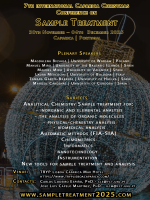Subtoxic concentrations of benzo[a]pyrene induce metabolic changes and oxidative stress in non-activated and affect the mTOR pathway in activated Jurkat T cells
DOI: 10.5584/jiomics.v4i1.157
Abstract
Although the activation of immune cells is the first and thereby pivotal step in the immunological cascade, the current knowledge about the details of this process is quite limited. Recent studies have shown that aromatic compounds, such as B[a]P, influence the immune system even at low concentrations. We investigated the effect of a subtoxic B[a]P concentration (50 nM) on the proteome and the metabolome of non-activated and activated Jurkat T cells. The GeLC-MS/MS analysis yielded 2624 unambiguously identified proteins. In addition to typical regulatory pathways associated with T cell activation, pathway analysis by Ingenuity IPA revealed several metabolic processes, for instance purine and pyruvate metabolism. The activation process seems to be influenced by B[a]P suggesting an important role of the mTOR pathway in the cellular adaptation. B[a]P exposure of non-activated Jurkat cells induced signaling pathways such as protein ubiquitination and NRF2 mediated oxidative stress response as well as metabolic adaptation involving pyruvate, purine and fatty acid metabolism. Thus, we validated the proteome results by determining the concentrations of 183 metabolites with FIA-MS/MS and IC-MS/MS. Furthermore, we were able to show that Jurkat cells metabolize B[a]P to B[a]P-1,6-dione. The combined evaluation of proteome and metabolome data with an integrated, genome-scale metabolic model provided novel systems biological insights into the complex relation between metabolic and proteomic processes in Jurkat T cells during activation and subtoxic chemical exposure.









